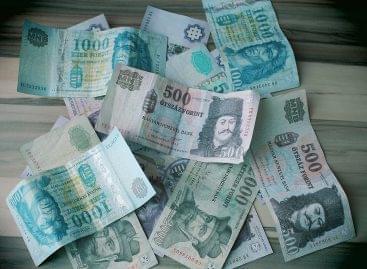Magazine: Record performance from our agricultural foreign trade in 2010
In 2010 our HUF 5.8-billion export expanded faster (by 13.8 percent) than import (9.7 percent), therefore Hungary’s balance in agricultural foreign trade improved in spectacular fashion, by 22 percent. This was Hungary’s best performance since our accession to the European Union, with export succeeding the excellent performance of 2008 by EUR 8 million. We closed 2010 with a HUF 2.1 billion agricultural foreign trade balance surplus by the agricultural sector and the food industry. Food industry’s share from export was 8.1 percent and in import it represented 5.6 percent, providing for 38 percent of the national foreign trade balance surplus in 2010. We can say that 2010 was a good year in our agricultural foreign trade and among our export products we find more processed ones than before – 61 percent of Hungary’s export was processed products. The main items in our 2010 export were the following: 950,000 tons of livestock and animal products, 6.6 million tons of cereal and 275,000 tons of milling industry products, 1.4 million tons of oily seeds and 271,000 tons of animal and vegetable fats and oils, 205,000 tons of vegetable and 201,000 tons of fruit and 2,627 thousand tons of food industry products. As regards our import, 2,313 thousand tons of food, beverage and tobacco products entered Hungary. Our livestock and animal product export grew by 22.8 percent, vegetable product export was up 8.7 percent, the export of food products, beverages and tobacco products expanded by 12.8 percent. In terms of import, data indicates a EUR 328 million higher level than in 2009: livestock and animal product import augmented by 20.7 percent, vegetable product import rose by 12.6 percent, but the import of food products, beverages and tobacco products only expanded by 1.5 percent – however, the latter constituted for 50.4 percent of total food import. Changes on the global cereal market lead to a price explosion, just like in 2007-2008. In the middle of last year 21 million tons of cereal export disappeared from international cereal trade when Russia, the Ukraine and Kazakhstan halted their exports. In August the sales price of wheat was 40 percent higher than a year earlier and by the end of the year prices elevated by 70 percent on the cereal market. Hungarian export price was averaging at EUR 202.6/ton in November 2010 – soaring by 153.6 percent from the previous comparable period. The structural characteristics of Hungary’s export improved: the export of highly processed products grew by EUR 237 million, while livestock and animal product export expansion was EUR 263 million. Our livestock and meat/meat product export exceeded import by 65 and 100 percent, respectively. In the case of cereal products we produced a 420-percent surplus and we sold 10 times more oily seeds abroad than the volume we bought. On the contrary, we have been net importers of milk and dairy products for quite a while as export hardly makes up for 78 percent of import. With the exception of this product group, we are only net importers of those products in the case of which there is no significant base material production in Hungary or there is no Hungarian-owned processing background. From Hungary’s agricultural export 82.5 percent ends up in the European Union and 92.9 percent of our import comes from the EU. ‘Old member states’ have a 56.7-percent share from our export and 43.3 percent goes to ‘new member states’. Import: the EU-27’s share was 92.9 percent, with 63.4 percent coming from old member states. If we take a look at some of our highlighted products, we can see that 84.2 percent of our wheat and 90 percent of our corn export was bought in the EU; 95 percent of Hungary’s beef export and 68.5 percent of our pork export went to the EU (only in the case of the latter was the EU-12 more significant than old member states). Examining agricultural export market trends in 2010 leads to the conclusion that to14 from our 20 most important markets we exported more products than a year before. Export to Slovakia developed the most rapidly at 62 percent and we did almost just as well in the Ukraine, while a 30-percent export growth in export to the United Kingdom is also remarkable. We exported 14.5 percent more to Romania – our most important export market in 2010 with a value of EUR 787 million. Germany has been our most important export market for decades and it must be mentioned that we only exported EUR 36 million less to Germany than to Romania, so no significant market loss occurred there. Italy, Slovakia and Austria followed in our export ranking. What about our sources of import? Well, according to statistical data Hungary’s import amounted to more than EUR 3,698 million in 2010; 97 percent came from Europe and 93 percent from the European Union. However, we must not forget that statistically banana, soy, coffee and the like are also considered to be European products as we import them after they reached ports in the EU. A drawback of this is that the country of origin practically disappears from our eyes, which constitutes a food safety risk. In terms of countries, Germany remained our most important partner, Slovakian import grew most significantly and only Italian import declined in 2010. By comparing export-import data from 2010 it becomes clear that Romania had the biggest influence on our balance. It is noteworthy though that we imported 2.5 times more food products from Romania than in 2009. The markets of Slovakia, Austria, Russia, Bosnia, the Ukraine, Slovenia, Bulgaria and Croatia largely contributed to our trade balance surplus. Trade deficit characterised the German, Dutch, British, Polish and Spanish markets. Italy was the second biggest contributor to our positive balance with 18.9 percent. Number three was Slovakia with 11 percent, followed by Russia and Austria.
Related news
Related news
Even though half of Hungarians are stressed about Christmas gifts, we don’t compromise on quality
🎧 Hallgasd a cikket: Lejátszás Szünet Folytatás Leállítás Nyelv: Auto…
Read more >Hidden imports in the European food chain – how is the EU internal market changing?
🎧 Hallgasd a cikket: Lejátszás Szünet Folytatás Leállítás Nyelv: Auto…
Read more >NGM: Fitch Ratings continues to recommend Hungary for investment
🎧 Hallgasd a cikket: Lejátszás Szünet Folytatás Leállítás Nyelv: Auto…
Read more >



